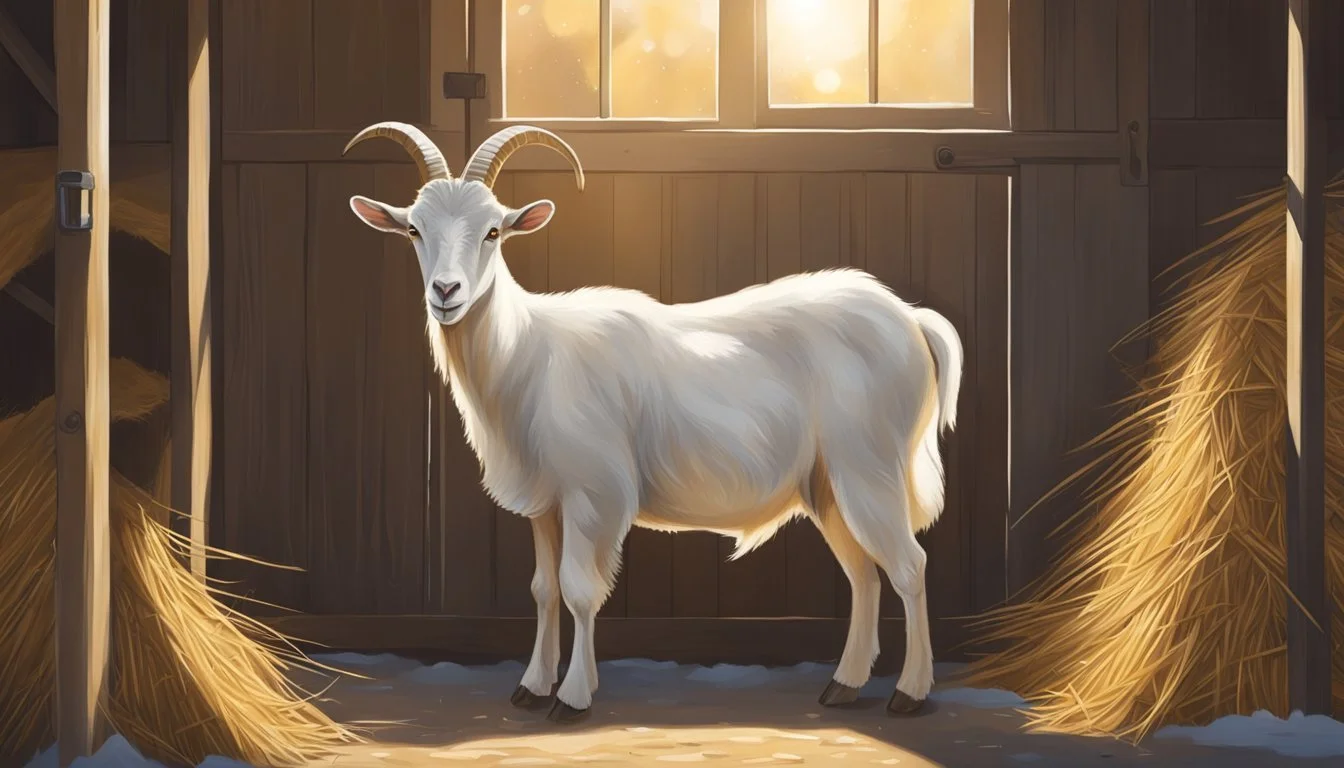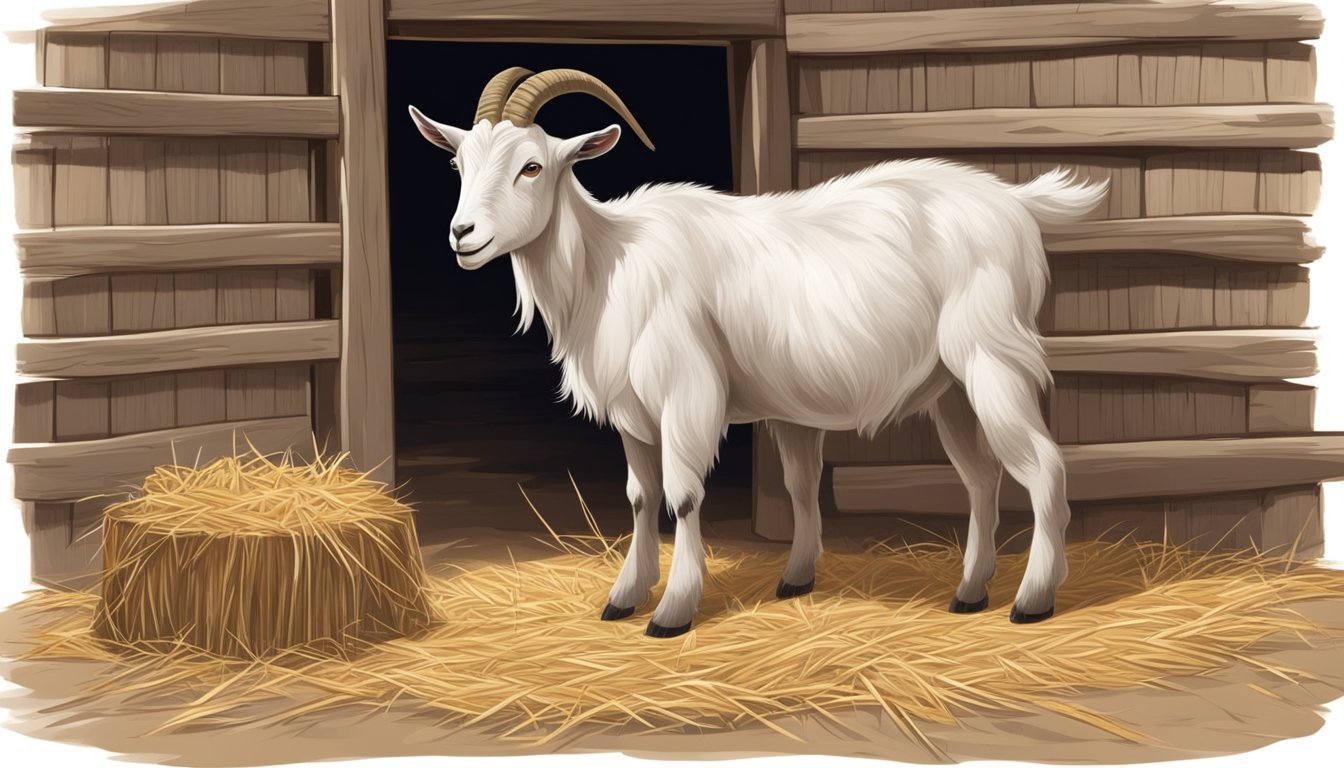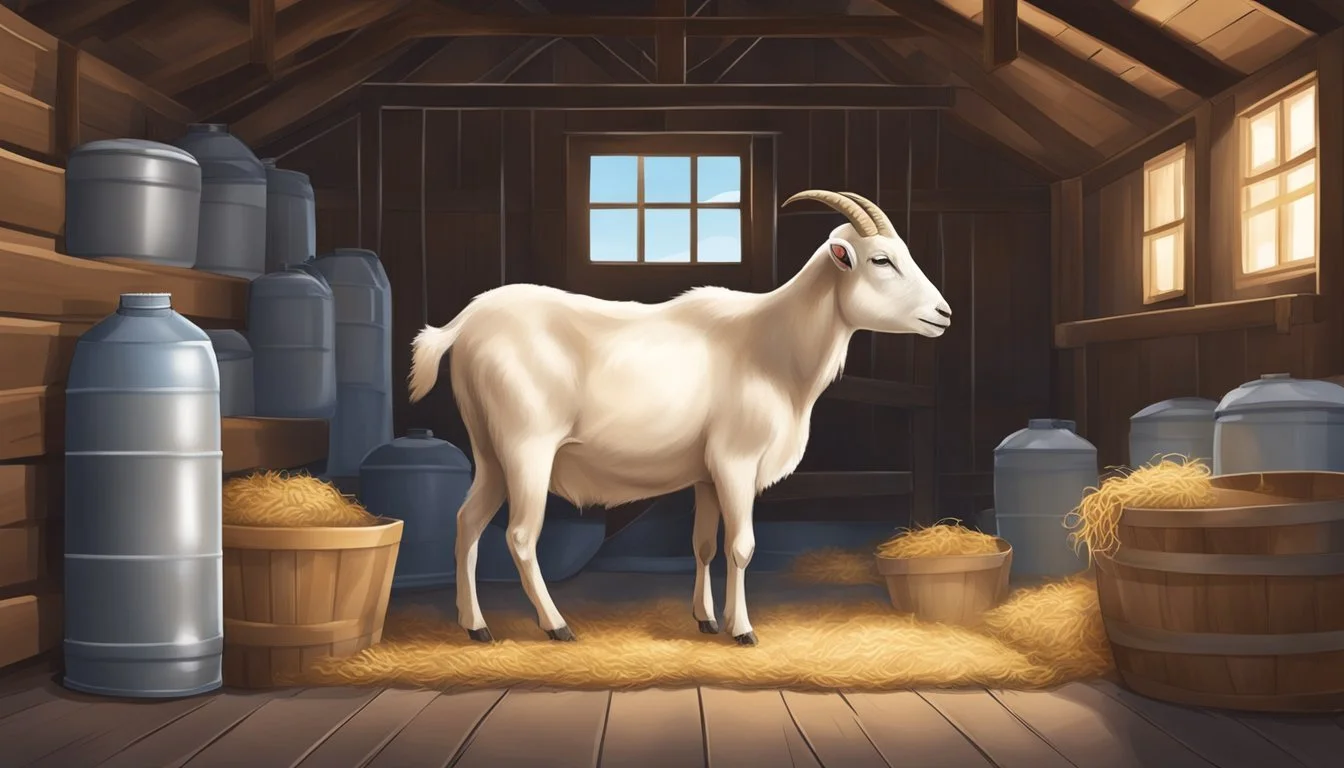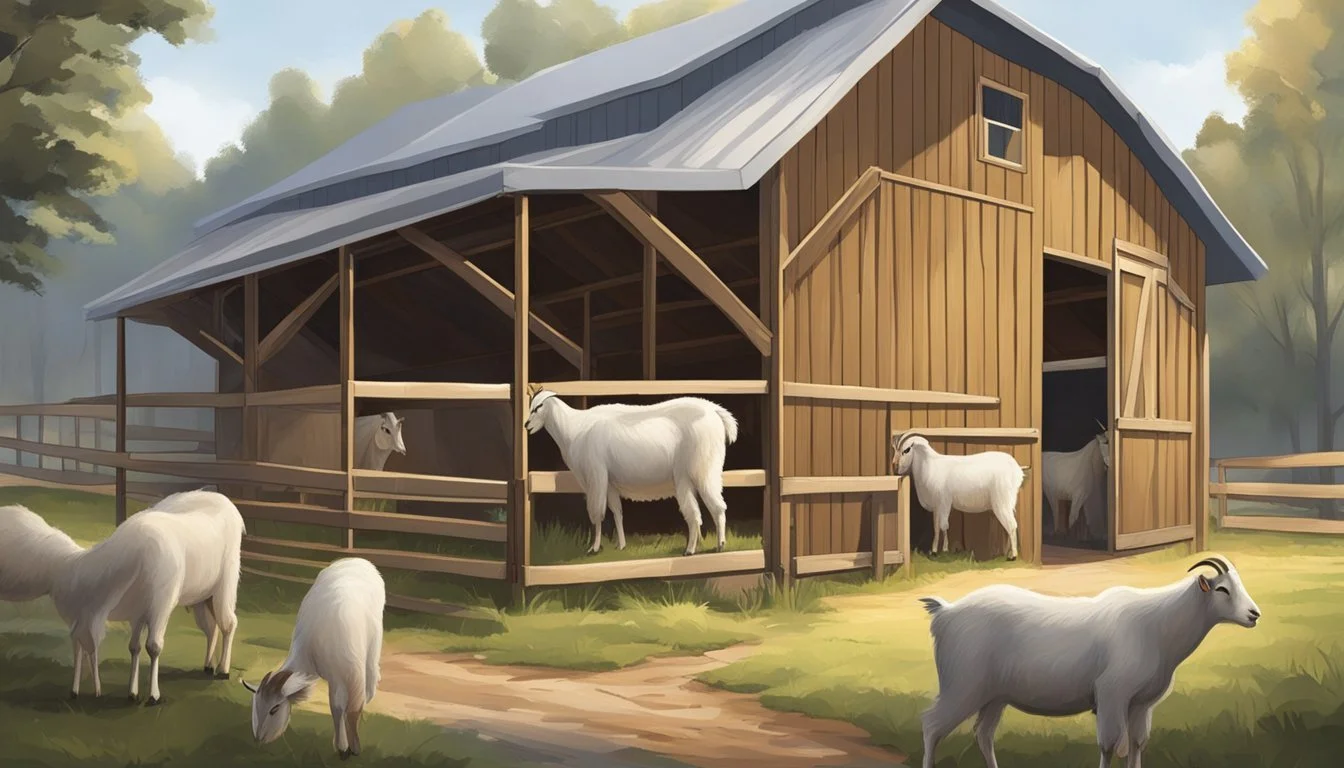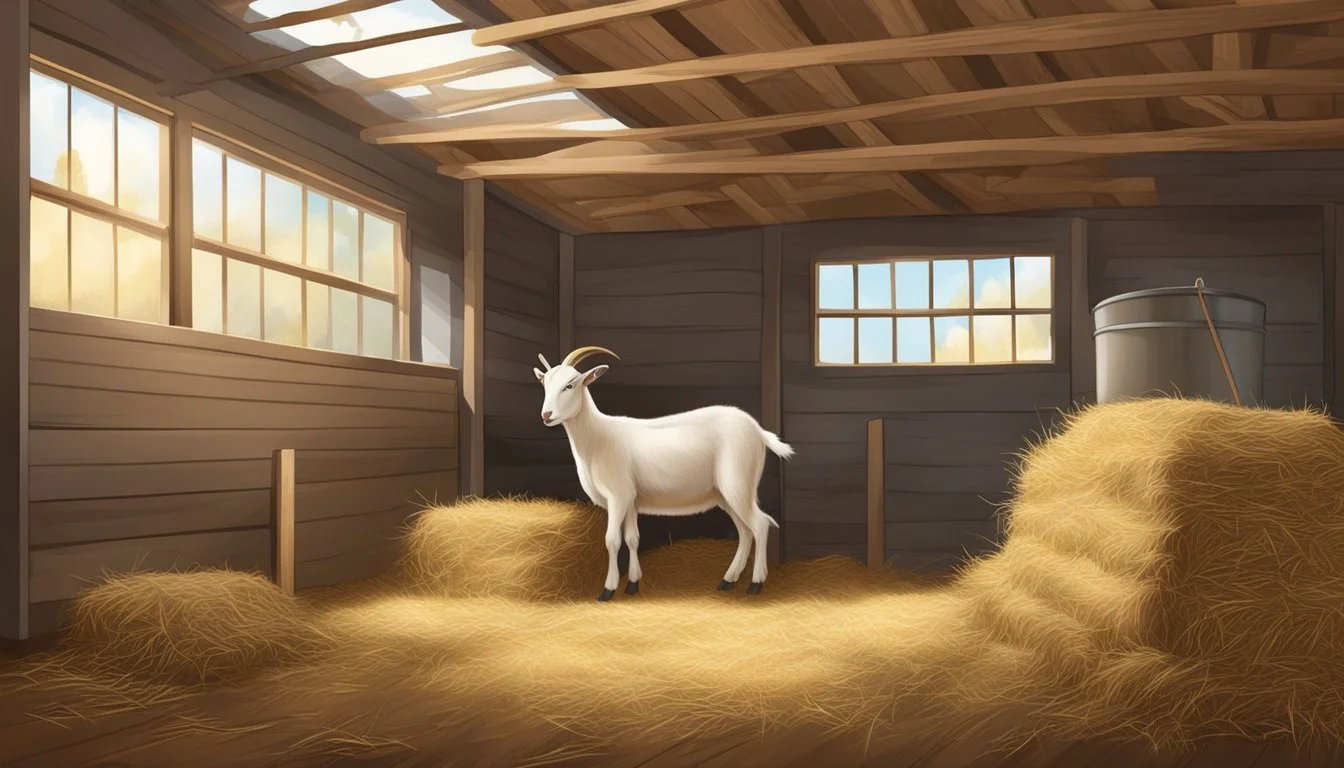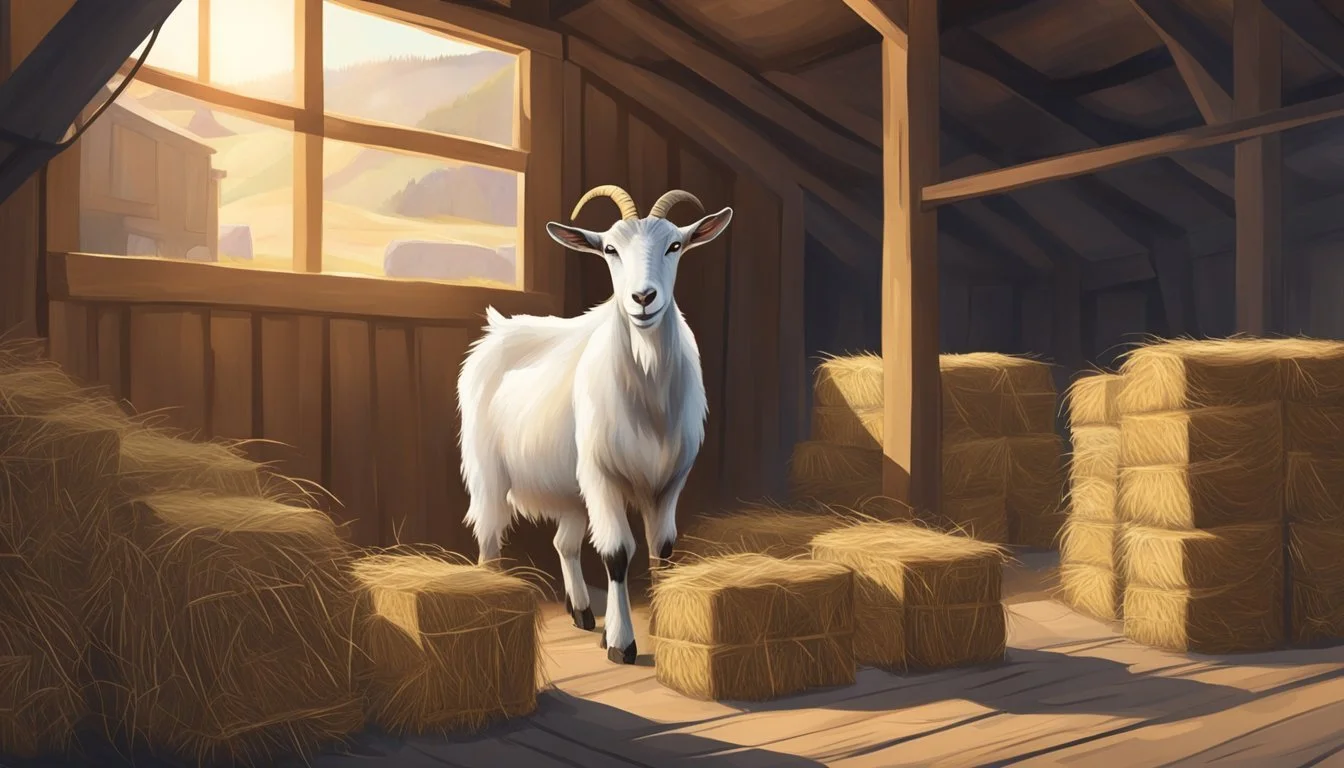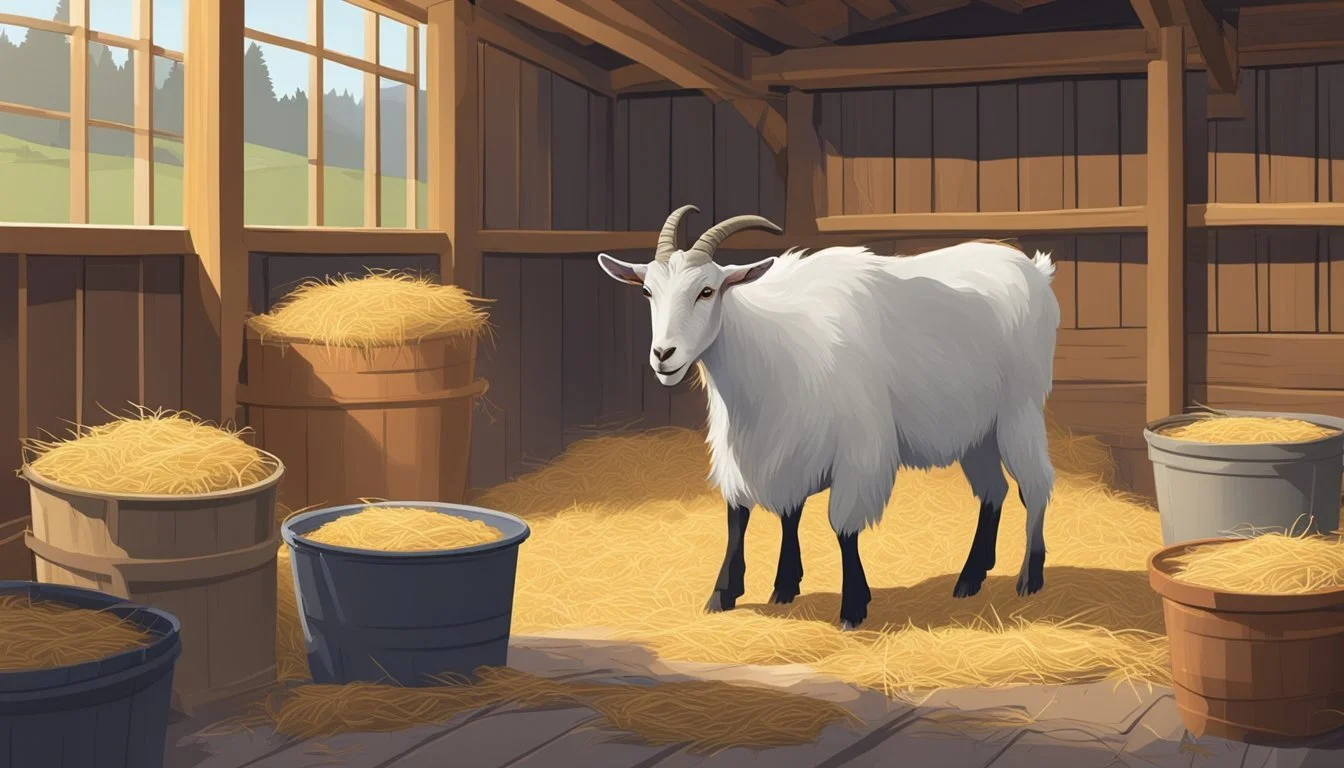Seasonal Goat Care
Essential Tips for Winter-Proofing Your Milking Goat
As temperatures drop and winter approaches, the care of milking goats requires particular attention to ensure their health, productivity, and comfort during the colder months. Goats are adaptable animals, but they rely on their caretakers to provide the necessary conditions to thrive in winter. It's critical to understand the specific needs of milking goats as they prepare for the chill, from nutritional adjustments to shelter modifications.
Proper winter goat care starts with the basics: a dry, draft-free shelter that protects the herd from the elements is essential. Since milking goats require a clean environment to maintain milk quality and to prevent health issues, their bedding needs to be kept dry and changed regularly to combat the humidity of winter. Moreover, maintaining a diet that meets their increased energy needs is crucial during this time, as milking goats expend more energy to stay warm, necessitating adjustments to their feeding regimen.
A focus on adequate water supply is a fundamental aspect of winter care; goats must have access to fresh, unfrozen water to stay hydrated. Dehydration in the winter can be as much of a risk as in the summer months, especially for milking goats, which may experience a decrease in milk production if their water intake is not sufficient. Alongside these practical measures, keeping a close eye on the herd's health, ensuring they remain active, and adapting to their increased dietary requirements, play a significant role in their overall well-being during the winter months.
Understanding The Basics Of Goat Physiology
To ensure the wellbeing of milking goats during winter, it's crucial to comprehend their physiology, specifically how their rumens function and their heightened energy needs in cold weather.
Rumens And Cold Weather Adaptations
Goats possess a unique stomach called a rumen, which plays a pivotal role in their adaptation to cold weather. The rumen ferments feed, producing heat as a byproduct, which is critical for maintaining body temperature when temperatures drop. In order for this fermentation process to run efficiently, a goat's diet in winter must provide adequate fibrous material. This dietary need ensures constant fermentation, which in turn keeps the goat warm from the inside.
Body Condition And Energy Needs
A goat's body condition is a direct indicator of its energy reserves, which are vital for withstanding cold temperatures. Optimal body condition is essential before entering the winter season as it reflects sufficient fat stores, which insulate and provide energy when fodder is less available. Milking goats, in particular, require increased energy in the form of calorie-dense feeds to not only support lactation but also regulate their body temperature against the cold. It is important to monitor their intake and adjust the diet to maintain a healthy body condition.
Securing Adequate Shelter
In the winter season, it’s critical for goat owners to provide a shelter that not only keeps goats warm but also ensures proper ventilation. An ideal winter goat shelter will protect from harsh elements while preventing moisture buildup, a common issue during colder months.
Winter Goat Shelter Essentials
A well-constructed goat shelter for winter should be sturdy enough to withstand snow and wind. The structure should be waterproof and draft-free, yet accessible for goats to enter and exit freely. It is recommended to use straw for bedding as it provides excellent insulation while being easy to replace. The deep litter method, where layers of straw and manure accumulate over the season, can be employed. This technique not only offers additional warmth but also simplifies maintenance—it involves periodic addition of fresh straw rather than daily clean-ups.
Walls: Must be solid to block drafts.
Flooring: Elevated, if possible, to prevent dampness; covered in a thick layer of straw.
Doorway: A windbreak or baffle can prevent snow from entering.
Ventilation And Insulation
Effective ventilation is crucial in a goat shelter to avoid moisture from goats' breath accumulating, which can lead to respiratory ailments. Strategic placement of vents or windows at the shelter's peak allows for the escape of warm, humid air while preventing drafts. Insulation can be improved without sealing the shelter completely—consider insulating materials that are safe for goats, as they tend to chew.
Vents: Should be placed high, away from resting goats.
Insulation: Safe materials are key since goats might nibble on exposed insulation.
Providing a dedicated and well-prepared goat shelter, with thoughtful considerations for straw bedding, the deep litter method, and proper ventilation, ensures goats remain healthy and productive throughout the winter season.
Nutrition And Feeding
As winter approaches, it is crucial to adjust a milking goat's diet to maintain health and milk production. Proper nutrition and feeding practices are key to a goat's well-being during the colder months.
Adjusting Feed Intake
Feed intake must be increased during winter to help goats maintain their body temperature and energy levels. It's recommended to provide additional calories, as goats require more energy to produce body heat. This often means incrementally increasing the amount of grain and roughage provided to the herd. For instance, raising the grain ratio by 10-15% is advisable to meet the elevated caloric demands.
Providing Balanced Nutrition
A well-balanced diet is essential for dairy goats during winter, and should consist of sufficient protein, vitamins, minerals, and roughage. Incorporate a variety of grains such as corn, oats, and barley to ensure a well-rounded intake. Alfalfa, high in protein and energy, can be a crucial part of the diet. Moreover, supplying goats with a salt block or loose minerals can cover any mineral deficiencies and promote overall health.
Special Requirements For Pregnant Does And Kids
Pregnant does have heightened nutritional needs, especially in the last trimester when the kids are growing rapidly. They require diets higher in calcium and phosphorus to support fetal development and prepare for lactation. For kids, they need a diet rich in protein for growth and development. Carefully monitor the body weight and condition of both the doe and her offspring to ensure they're on the right track nutritionally.
Watering Systems In Winter
Maintaining proper hydration for milking goats during winter requires reliable watering systems designed to prevent freezing. Dehydration in cold weather is a serious risk, as goats may drink less if water is too cold or frozen.
Preventing Dehydration
Goats need consistent access to fresh water to prevent dehydration, even in winter. It's essential to monitor their intake daily, ensuring that each goat consumes an adequate amount, usually between 3-5 gallons per day.
Heated Buckets And Watering Solutions
Heated buckets are an effective solution to provide fresh water that is not too cold, and will prevent freezing. These buckets typically require an electrical source and should be checked regularly for proper functioning and safety. For those without electricity, insulated or solar-powered options may be a feasible alternative.
Health Management and Grooming
Managing the health and grooming of milking goats during winter is critical. Owners need to focus on regular health assessments, proactive parasite and worm control, and consistent hoof care to ensure goats remain productive and healthy.
Regular Health Check-Ups
Regular check-ups by a veterinarian are crucial for monitoring the health of goats. During these check-ups, the veterinarian can identify and address health issues such as respiratory infections, which are more common in the colder months. Producers should also observe their goats daily for any signs of illness, including changes in appetite, behavior, or milk production.
Dealing With Parasites And Worming
Parasite control is essential, as infestations can lead to serious health issues. Goats should be regularly checked for parasites, especially lice and mites, which can be more problematic in dense winter coats. Worming goats should be done as recommended by a veterinarian to manage internal parasites, with fecal egg counts helping to identify the need for treatment.
Supporting Hoof Health And Maintenance
Maintaining healthy hooves is imperative in the prevention of foot rot and other hoof-related illnesses. Hooves should be inspected and trimmed every 4-6 weeks to prevent overgrowth that can harbor mold or bacteria. Owners should keep their goats’ living area clean and dry to reduce the risk of hoof problems.
Safety Measures And Precautions
When winter approaches, ensuring the safety and health of milking goats requires implementing specific measures tailored to the colder climate and indoor housing. These preparations are vital for preventing accidents and maintaining a clean environment conducive to goat health.
Preventing Barn Fires
Heat lamps are frequently used to keep goats warm during winter, but they present a significant risk for barn fires if not used safely. It is imperative to:
Securely attach heat lamps out of reach from goats to prevent them from being knocked over.
Regularly inspect electrical cords for any signs of damage, and replace frayed wires immediately.
Using heat lamps that have protective guards and are CSA approved can also reduce the risk of fires.
Managing Bedding And Cleaning Protocols
Proper goat bedding is crucial for comfort and warmth but also impacts barn cleanliness. During winter, one should:
Utilize pine shavings as they are highly absorbent and help reduce odors, keeping the bedding dry and sanitary.
Establish a regular cleaning schedule to remove soiled bedding and replenish with fresh shavings, at least once a week, to mitigate the risk of bacterial growth and ensure a healthy living space for the goats.
Thoroughly clean feeding areas and ensure any spills are promptly addressed to avoid attracting pests and maintain overall barn hygiene.
Additional Considerations
When preparing milking goats for winter, it's pivotal to consider their exposure to the cold and the need to have sufficient supplies on hand. Ensuring goats have appropriate clothing and protection from the elements, along with a well-planned stockpile of essentials, can help them stay healthy and productive.
Goat Clothing And Protection
Goats naturally develop a thicker coat in the winter; however, extra protection such as a goat coat can provide additional warmth and shield against wind and rain, especially for breeds with less dense fur or in particularly harsh climates. It is important to choose water-resistant and well-fitted goat coats to prevent moisture from getting trapped against the body, which can lead to cold stress.
Stockpiling Essentials
A well-maintained supply of hay is crucial, as goats require access to quality forage to maintain body heat during colder months. Hay should be stored in a dry, protected space to prevent mold and spoilage. In addition to feed, other essentials include a stock of clean, unfrozen water—since a lactating goat will require an additional 0.5 gallons of water for every 2 pounds of milk produced—and a reserve of necessary medications and supplements to maintain optimal goat care throughout the winter.
Breeding And Livestock Management
Bringing a milking goat herd through the winter requires attention to breeding schedules and the physical management of both does and bucks. The aim is to maintain herd health and productivity even as temperatures drop.
Breeding Cycle and Its Impacts on Winter Care
The breeding cycle of goats significantly influences their winter care. Does should be at an optimal body condition prior to breeding to ensure the health of both the does and their future kids. It's vital to act early, as goats gain weight slowly; therefore, condition improvements should commence well ahead of the colder months. During this time, energy requirements can increase and maintaining a proper diet that supports both gestation and lactation through winter becomes a priority.
Managing Bucks And Does
Bucks also require specific attention pre-breeding and during winter. It's essential to lead with practices that minimize stress and promote good health, which includes separation from does when not breeding and providing shelter against harsh winter conditions. For does, the focus is on nutrition and comfort. After breeding, keeping them in a stress-free environment with adequate nutrition is key to successful gestation. Ensuring their living quarters are well-protected against the cold helps in maintaining their body condition throughout winter.
Enhancing Goat Comfort
Proper shelter and a calm environment are crucial for maintaining the health and productivity of milking goats during the winter. These factors significantly impact their well-being and milk yield.
Windbreaks And Shelter Positioning
Windbreaks are essential in protecting goats from the cold winter winds. An effective windbreak can be established by strategically placing the goat shelter on the property. It should be oriented so that the longest wall deflects prevailing winds, and ample fencing should include a solid barrier that reduces wind speed without hindering ventilation.
Location: Position shelters to face south or southeast to maximize sun exposure and warmth.
Materials: Use sturdy materials for construction that can withstand heavy wind and snow.
Design: The shelter entrance should have a protective overhang or angled entry to block wind while allowing goats to move freely.
Creating natural windbreaks such as rows of trees or shrubs can further enhance protection, as they serve as a barrier against wind while contributing to the landscape's aesthetic and environmental value.
Creating a Stress-Free Environment
The well-being of goats necessitates a stress-free environment, especially during the harsh winter months. A stress-free environment fosters a sense of security, leading to better milk production and general health.
Space: Ensure each goat has enough space to move, rest, and feed without competition. Overcrowding can lead to stress and illness.
Fencing: Robust fencing is required to safeguard goats from predators and prevent escape, adding to their sense of security.
Sanitation: Regularly clean bedding and feeding areas to reduce disease risk and maintain a healthy living space.
Providing enrichment such as platforms to climb on and safe toys can also contribute to a stress-free environment by satisfying their natural curiosity and playful behavior.
Preparing Your Homestead
When winter approaches, ensuring your milking goats have appropriate facilities and that you are equipped with the necessary knowledge is crucial for their wellbeing during the colder months.
Facilities And Space Planning
It's imperative to assess and upgrade the housing and shelters on the homestead to protect the goats from harsh weather. Goats need a dry, draft-free environment, so check existing structures for leaks or gaps and repair them before winter sets in. Space planning involves arranging enough room for all goats to rest comfortably, which typically requires about 10-15 square feet per adult goat within the shelter.
Insulate shelters to maintain a stable temperature
Ventilation must be adequate to prevent moisture buildup
Bedding should be plentiful and dry; straw is a good insulator
Education And Training
Shepherds must arm themselves with knowledge and skills to tackle winter-related issues, such as frostbite or decreased milk production. Training on how to make Cultured Butter or Cultured Buttermilk and Sour Cream can also help in adding value to the milk produced, even during winter slumps.
Familiarize yourself with proper goat nutrition in winter
Learn about winter illnesses and their prevention
Plan a schedule for milking routines in cold weather
Essential Minerals And Supplements
When preparing milking goats for winter, ensuring they receive adequate minerals and supplements is crucial for maintaining health and productivity. The chillier months may increase nutritional demands; hence careful supplementation of specific minerals is essential. Milking goats require a range of microminerals and macrominerals, among which copper, selenium, and zinc are particularly vital.
Copper is necessary for proper coat health, immune function, and reproductive performance. However, goats can easily suffer from copper deficiency or toxicity, so it is imperative to provide the correct amount. A balanced, loose, free-choice goat mineral can help in meeting their copper needs without over supplementation.
Selenium plays a critical part in muscle development and preventing disorders like white muscle disease. It's often provided in conjunction with Vitamin E, and one should be cautious not to exceed recommended levels, as selenium can be toxic in high doses.
Zinc is essential for skin health and keratin formation, vital for hoof integrity. Sufficient zinc levels can support goats in preventing hoof issues which can become more prevalent in winter conditions.
For these minerals, it's advisable to provide a goat-specific mineral blend that suits the higher demands of milking goats and accommodates the potential for slower feed intake during cold months.
Mineral: Copper
Function: Coat health, immune function, reproduction
Supplementation Method: Balanced mineral mix, copper bolus
Mineral: Selenium
Function: Muscle development, prevention of white muscle disease
Supplementation Method: Selenium and Vitamin E supplement
Mineral: Zinc
Function: Skin health, keratin formation, hoof integrity
Supplementation Method: Through feed or mineral mix
Regular monitoring and adjustments to feeding and supplementation routines are critical to keep milking goats in peak condition through winter while managing intake levels to prevent overdosing.
Understanding The Local Climate
Preparing milking goats for winter requires a thorough understanding of the local climate. Cold weather can significantly affect a goat's health, milk production, and overall well-being.
Temperature Range: Identify the average low and high temperatures of the region. Goats are generally hardy animals but can be sensitive to drastic temperature drops.
Precipitation: Know the levels of rainfall or snowfall expected. Adequate shelter is critical for goats to stay dry and warm.
Wind Chill: Understand how wind chill can lower the perceived temperature, impacting goats more than the actual air temperature.
Goats' coats thicken naturally to adapt to colder climates, providing them with some protection against cold weather. However, farmers should ensure that additional measures are in place, such as:
Draft-free Shelter: Adjust barns or shelters to be draft-free while maintaining ventilation. Humidity combined with cold temperatures can lead to respiratory issues.
Bedding: Provide deep, dry bedding to insulate goats from the cold ground. Straw is an excellent choice as it retains heat and allows goats to nest.
Water Supply: Ensure that water sources do not freeze. Goats require access to fresh water to avoid dehydration and maintain optimum health.
By taking these variables into account, farmers can tailor their winter care to suit the specific needs of their milking goats, taking into consideration the unique challenges presented by their local climate.


